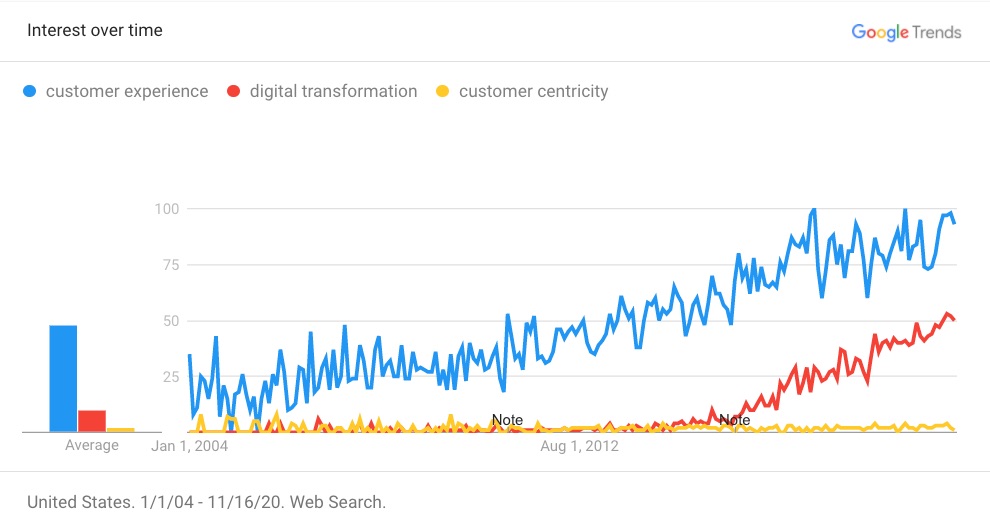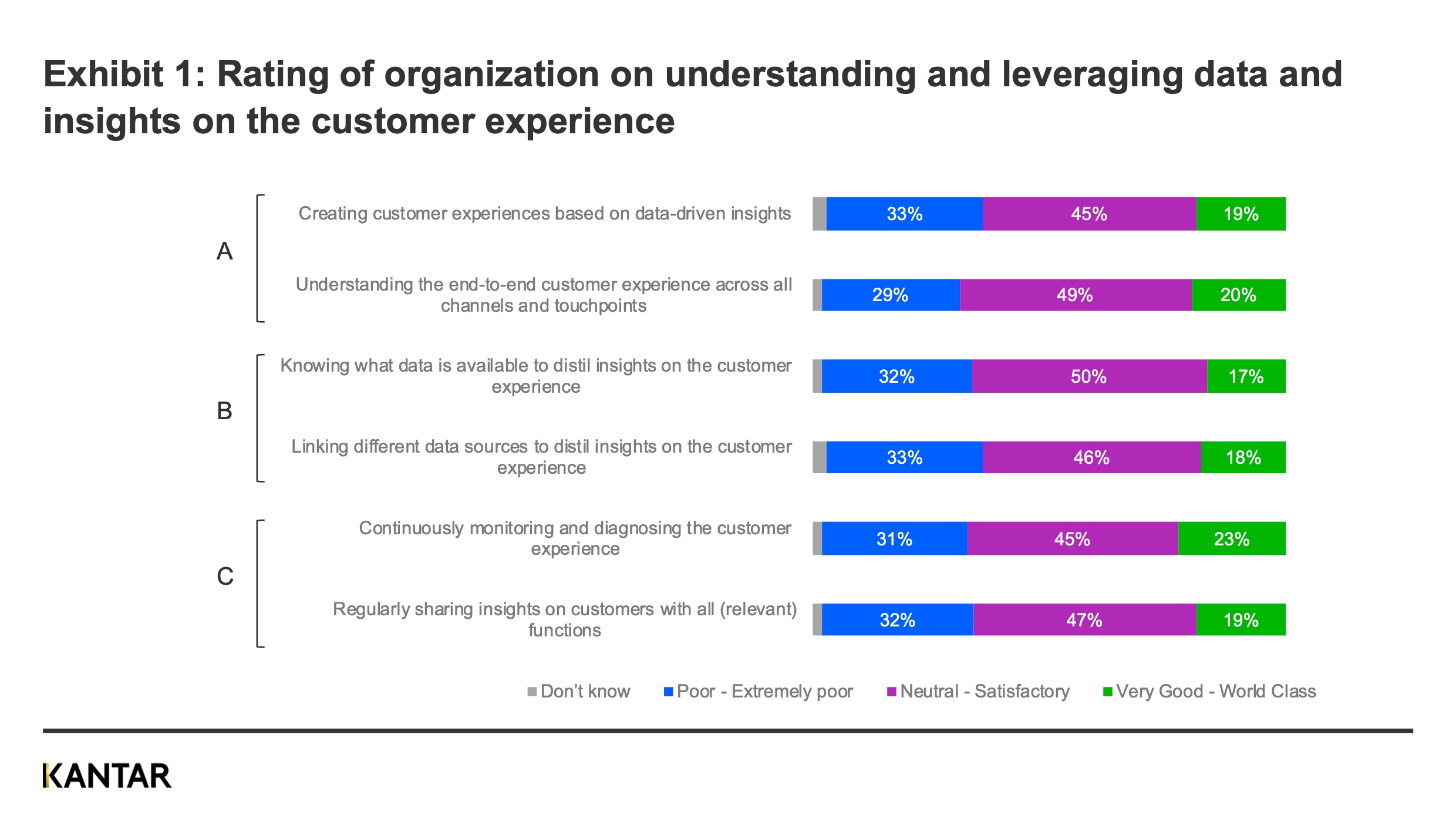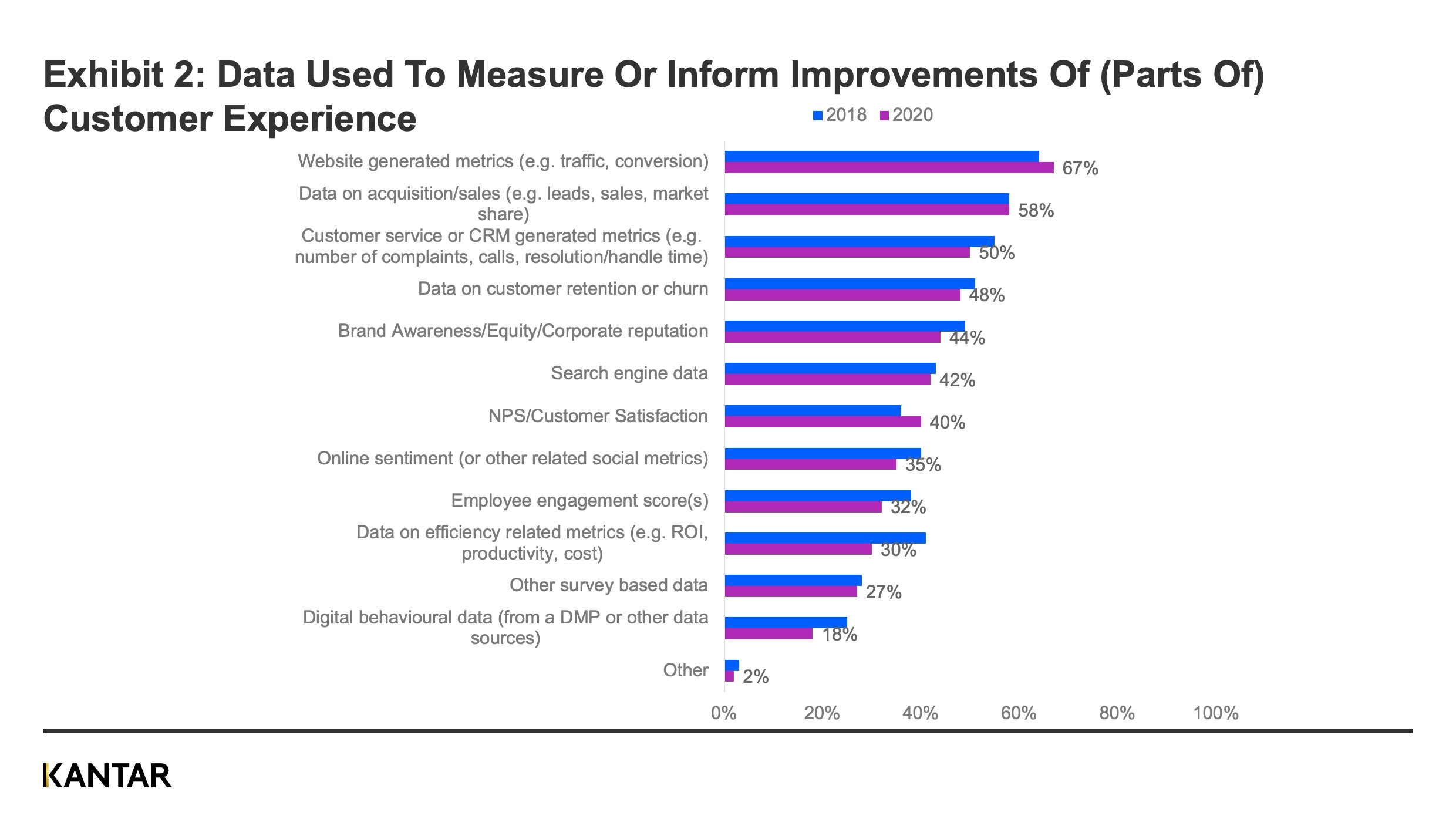Despite the promise of customer experience as a strategic differentiator for brands, research conducted with marketers indicates that most organizations are not able to effectively leverage customer data and insights to drive CX development. Our research identifies three key pitfalls—no team to manage and measure CX, an incomplete view of customer journeys, and a failure to continuously monitor and share customer experience insights. Addressing these pitfalls may allow organizations to establish a fertile base for developing stand-out customer experiences.
Over the past few years, customer experience (CX) has become a cornerstone of business strategy and part of the cultural zeitgeist. We’ve seen the use of “customer experience” skyrocket (see chart below), as strategists have turned their attention to CX as a new frontier of business growth. We’ve seen a proliferation of roles within organizations related to customer experience ranging from chief experience officer (CXO) to CX manager and CX specialists.

Customer experience is, of course, nothing new. However, new technologies have enabled the development of tools and processes that have extended the boundaries of traditional customer experience strategy. Machine learning and its associated applications promise a future where companies will be able to achieve the “holy grail” of customer experience: perfectly personalized recommendations and one-to-one commerce.
Any standout customer experience starts with figuring out the “what” and working backwards to design, develop and deliver products and services that customers use and recommend to others. But how effective are marketing organizations at understanding “what” customers are looking for and “why”? And are they getting better?
The AMA and Kantar conducted surveys with marketers in 2018 and 2020 to understand how organizations are going about measuring, analyzing and evolving their customer experience. A mere one in five organizations rate themselves at least “very good” at creating customer experiences based on data-driven insights. Organizations equally struggle with understanding the end-to-end customer experience across all channels and touchpoints (see exhibit 1). With all of the talk about the abundance of data, why are so many organizations having difficulties with that first foundational step?
This disconnect is caused by one or several of the following pitfalls: having no team in place, having an incomplete view of customer journeys and experiences, and failing to continuously monitor and share insights.

Taken together, avoiding these three pitfalls can provide a fertile base of insights on “what” and “how” to improve customer experience, enabling organizations to more effectively allocate resources to the parts of the customer experience that matter most, improve consistency of brand across touchpoints, and measure the return on investment from CX initiatives.
Pitfall No. 1: No team in place
The first major pitfall is that there is no team in place to measure and analyze the customer experience. Just under half of organizations surveyed (48%) indicate that they have a team in place to do so.
Without a team in place, organizations can struggle to build a single source of truth about how customers actually feel about your organization’s customer experience. Without a single source of truth, customer experience investment decisions often depend on conflicting anecdotes and opinions on what really matters to customers and how to best meet their evolving needs.
Installing a team can take many different forms and our research does not indicate that a particular structure is more effective than another. Teams can sit within specific business units, functions or even within centers of excellence. What matters is that teams have ownership of developing a data-driven, objective perspective of the customer experience to inform investment and optimization decisions.
Pitfall No. 2: Incomplete view of customer journeys and experiences
The second pitfall is failing to capture a complete view of customer journeys and experiences. Based on our research, the average marketing organization uses only five types of data to measure or inform customer experience, and that hasn’t changed over the past two years. It is therefore no surprise that marketers don’t rate themselves well in terms of knowing what data is available to distill insights on the customer experience. The top three metrics used by organizations are all behavioral: website-generated metrics, acquisition- or sales-related data, and customer service- or CRM-related metrics (see exhibit 2).

While behavioral metrics are critical to foundational understanding, they fail to capture the full picture of customer decision-making. Depending on the nature of your product or service, customer experience hinges on a number of emotional and contextual factors. Although it is impossible to capture and predict every factor, studying the experience holistically, including customer emotions and associated touchpoints, allows for the identification of pain points that wouldn’t be apparent from simply observing behavioral data. Linking different data sources to distill insights is therefore essential, but only 18% of all marketers rate their organization at least as “very good” at it (see exhibit 1). A good starting point is outlining the common steps in your customer journey and mapping available data against those steps to identify key gaps. Addressing those gaps with first- or third-party data sources will help build a more complete picture and allow you to focus on priority areas for investment.
Pitfall No. 3: Failing to continuously monitor and share insights
The third major pitfall is failing to continuously monitor and share insights on the customer experience. Less than one in four organizations rate themselves as very good at “continuously monitor and diagnose the customer experience” or “regularly share insights on customers with all relevant functions” (see exhibit 1C).
Too often, customer experience initiatives are one-off investments, rather than ongoing customer-centric programs. Competitors and customer touchpoints are always evolving and investments in CX must be considered as an integral part of any organization’s marketing mix. An always learning culture requires regularly analyzing the metrics that drive business results and adjusting leading and lagging KPIs as necessary. Moreover, gathering insights on a regular basis to refine and enrich an understanding of the moments of experience that matter most can help keep the whole organization attuned to its most important stakeholder: the customer.
Ultimately, building and maintaining a standout CX starts with a fundamental mindset shift from “one-off initiative” to “integrated strategic pillar.” It starts with putting a team in place to ensure ownership, establishing an insights engine to capture the right data and continuously monitoring and sharing insights. Ensuring this is set up properly often results in a fertile base for developing a standout customer experience.


